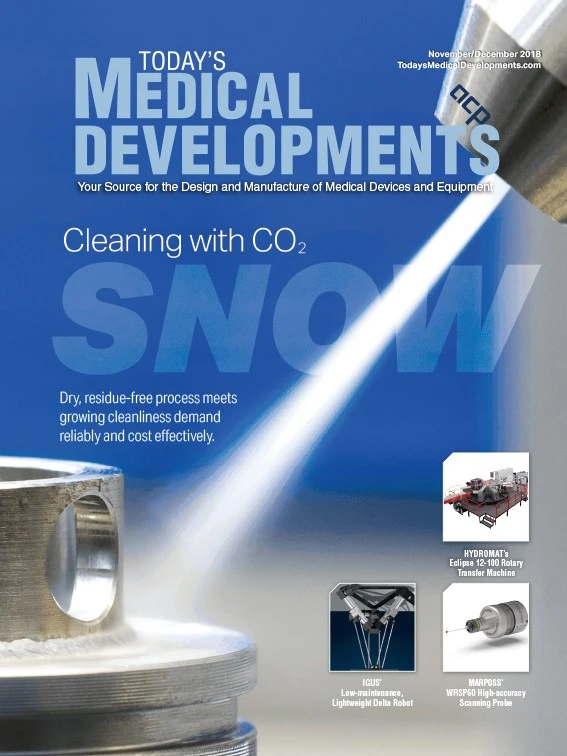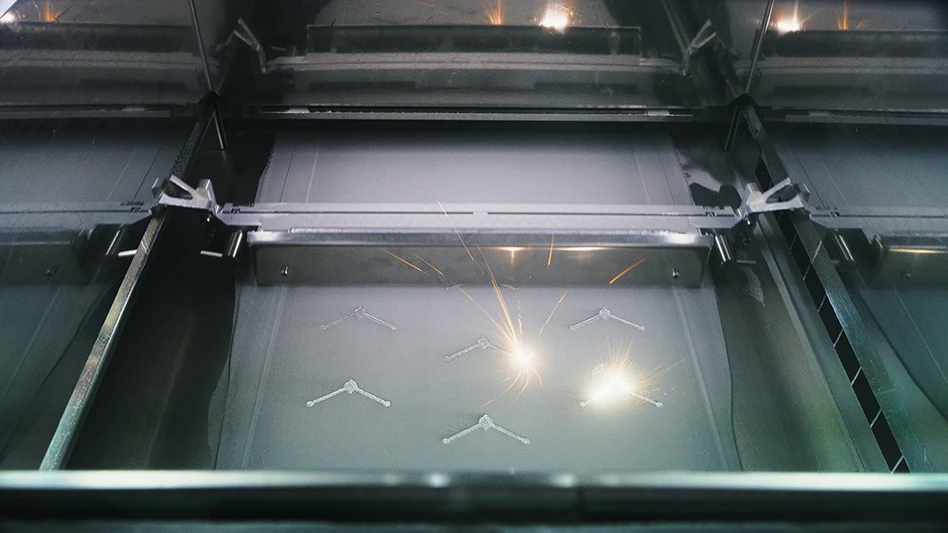
When a company comes out of a leading brand, transferring and integrating huge amounts of data can be challenging. However, the task can also provide an opportunity to upgrade information management systems for more effective product and business decisions.
Such was the experience of Ascensia Diabetes Care, created in 2016 when Bayer AG sold its 70-year-old diabetes care business to PHC Holdings (formerly known as Panasonic Healthcare Holdings). Ascensia, now a stand-alone company, makes products including Contour blood-glucose monitoring systems.
With many former Bayer employees, “We knew the product, it was just handling the transition we needed help with,” says Ascensia Manager of Engineering systems Chris Pasternak. “Bayer is a great company with a lot of irons in the fire. Now, for us as Ascensia, to be able to focus solely on the diabetes industry and develop more and better products is very exciting.”
Transitioning
Yet that excitement was tempered by the need to come completely off Bayer’s existing SAP enterprise resource planning (ERP) software system within 18 months. New ERP and product lifecycle management (PLM) systems needed to be configured and integrated, and everything required rebranding from Bayer to Ascensia, affecting multiple products sold globally with customized packaging in many different languages.
Consider a single Ascensia blood-glucose monitor: the hand-held device comes individually packaged, shipped in large lots, and accompanying supplies include lancets for the finger-stick and test strips that go into the meter. Ascensia employees had to replace all existing blood-glucose monitors and associated hardware that included the Bayer name and branding with versions bearing the new company logo, and redesign artwork, labeling, and packaging. Designs, marketing plans, manufacturing guidelines – all needed to be created, approved, executed, and completed by the end of the transition period.
“Every component that went into every country had to be touched,” Pasternak says. “Even the needles on our lancets had to be redesigned because they all had the Bayer cross emblem on them.”
To manage everything from a product and a financial-system standpoint, Ascensia had to process numerous change orders to track all the redesign work, produce and distribute all the new product versions to proper destinations, and keep the overall task flow of the business running smoothly throughout. As a medical device manufacturer, Ascensia also had to ensure continual compliance with FDA and ISO requirements as every transformation unfolded during the transition period.
Software tools
To manage the project, Ascensia turned to global consulting, technology services and digital transformation firm Capgemini. Its experts recommended NetSuite, a cloud-based software-as-a-service (SaaS) ERP system with a focus on the business applications of supply-chain management and procurement. Capgemini also provided customer relationship management (CRM) software.
PLM software, something the Ascensia team didn’t use at Bayer, serves as the system of record for everything involved in managing product development, manufacture, and assembly. Ascensia considered four different PLM tools and decided on Autodesk’s cloud-based Fusion Lifecycle.
After one Fusion Lifecycle provider stepped away from the project several months in, due to the size and complexity of the challenge, Capgemini and Autodesk recommended Razorleaf for implementation services and to support configuration and integration of the PLM system.
“Despite the late start and the size of the project, Razorleaf and Capgemini helped us handle it all, within regulatory obligations, and we were done ahead of schedule,” Pasternak notes.
Protecting legacy
An in-depth look at the many steps taken to ensure the project’s success provides a more realistic view of the massive scope of the task.
“The biggest thing we had to tackle was that we had a lot of data, and it wasn’t going into the same box,” Pasternak begins. “We weren’t going from SAP to SAP, so A didn’t equal A. We were trying to manipulate our data into a completely different system, and at the same time do system upgrades to change certain things we wanted to do in other ways. But we also wanted to keep some familiarity in our process so we didn’t totally lose our people; we still wanted to find all the previous information that we brought in.”
“A key piece was that legacy information,” notes Capgemini Work Stream Project Manager Janie Gurley. “We needed to take decades of information out of SAP at Bayer, and it was a huge win to be able to migrate all that information over into Ascensia’s current environment instead of setting it aside.”

Implementing PLM
“Ascensia had done an excellent job collecting their requirements,” says Rodney Coffey, Razorleaf’s project manager and solution architect. “There were few gaps, so we were for the most part able to jump right in. However, it was clear from the beginning that there would be hurdles to creating all the necessary documentation for FDA compliance.”
Razorleaf gave a global-design presentation to Ascensia to provide everyone with an understanding of the PLM solution being put in place and all the steps toward integration and full implementation.
“We used our iterative design approach that keeps the customer in front of the solution as it is being developed,” Coffey says. “This helps control scope and ensures they are getting exactly what they want.”
Razorleaf started the PLM configuration, knocking out each application one-by-one while maintaining full functionality.
“We had team members working in parallel to create the needed FDA compliant specifications and test protocols for each of the business applications,” Coffey says. “Ascensia also had the responsibility of creating their own new standard operating procedures for the system’s end users.”
The PLM portion of the project came back on schedule relative to the ERP and CRM implementations, ready for integration with NetSuite and the data migration from Bayer’s legacy SAP system.
For the integration, Razorleaf developed the specification that laid out the necessary field mappings and business processes. An integration software, Mulesoft (since acquired by Salesforce), transferred data between the PLM and ERP systems.
“Seamless integration between the two optimizes communication between the engineering and the purchasing groups,” Coffey says.

Data migration
After extracting the Ascensia data from SAP, Razorleaf transformed the raw data for loading into Fusion Lifecycle, something Coffey calls “a large, cumbersome effort but one that was necessary to create the new PLM environment.”
It took about four months to migrate all revisions of Items and BoMs, legacy change orders, specifications with attachments – and then generate the needed relationships between these records in the Fusion Lifecycle system.
“We created two different engineering change order (ECO) types – one’s legacy, one’s the new one in Fusion Lifecycle,” says Pasternak. “We can look up anything that was legacy and still see all the text. We have governing requirements that data has to be there for seven to 10 years, and we’ll probably hang onto it forever. But going forward, we have a different workspace for all our future ECOs.”
With the migration completed, the PLM environment reached a production-ready point, and Ascensia was able to begin end-user training (Razorleaf trained three Ascensia staff to be trainers) and start coordinating new change orders in the system.

Benefits

“In the first two months of the new system we were able to put out about 20% more ECOs and our cycle times were reduced by close to 20% as well,” Pasternak notes. “By processing ECOs faster, we can get to market quicker. We’ve now wrapped up our rebranding efforts and are moving onto our next project.”
Things are running more smoothly on many other levels as well.
“The learning curve for staff is much less steep, and a lot of that is due to the way Fusion Lifecycle works. Things are more on the surface, so you don’t have to dig through ten different areas to find what you need,” Pasternak says.

Reporting is also improved with the new PLM system.
“Before, we’d spend a day building an Excel spreadsheet that was nearly out of date by the time we published it the next day,” Pasternak says. “Now we can build and publish an intricate report quickly, and whoever needs the information can grab all the real-time data immediately.”
The FDA is never far from any medical-device manufacturer’s mind and Ascensia is no exception.
“We are very well regulated, whether it be the FDA here in the U.S. or other regulatory governing bodies in different countries,” Pasternak says. “The new system allows us to prove we’re adhering to all of our process requirements and maintaining the tight compliance we need.”
Ascensia Diabetes Care
http://www.ascensia.com
Autodesk
https://www.autodesk.com
Capgemini
https://www.capgemini.com
Razorleaf
https://www.razorleaf.com

Explore the November December 2018 Issue
Check out more from this issue and find your next story to read.
Latest from Today's Medical Developments
- HERMES AWARD 2025 – Jury nominates three tech innovations
- Vision Engineering’s EVO Cam HALO
- How to Reduce First Article Inspection Creation Time by 70% to 90% with DISCUS Software
- FANUC America launches new robot tutorial website for all
- Murata Machinery USA’s MT1065EX twin-spindle, CNC turning center
- #40 - Lunch & Learn with Fagor Automation
- Kistler offers service for piezoelectric force sensors and measuring chains
- Creaform’s Pro version of Scan-to-CAD Application Module





